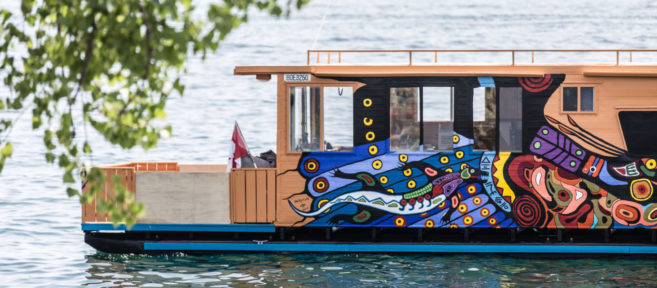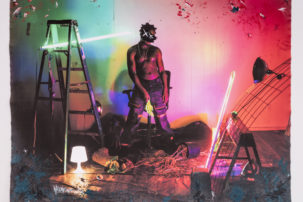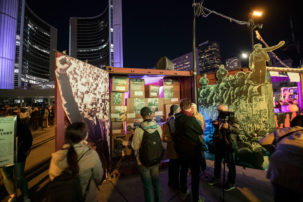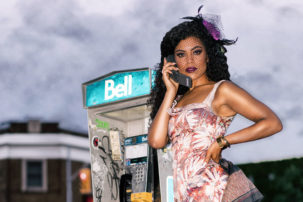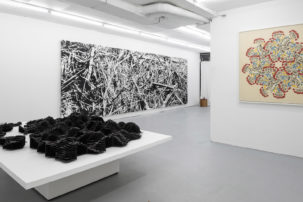This fall, Toronto was blessed with Radical Love, an enlivening installation by Syrus Marcus Ware that highlighted Black and Afro-Indigenous trans people who have made tremendous contributions to the city. The project was supported by the Bentway’s Safe in Public Space project, an initiative that explores public safety, COVID-19 challenges and systemic inequities. Its creative partners have focused on responding to the increased acts of hostility and racism against marginalized groups—especially those who are Black, Indigenous and people of colour (BIPOC)—in public spaces.
Radical Love served as a monument to some of the local living trans s/heroes our city should know (and also thank), honouring Black and Afro-Indigenous trans lives and survival. The larger-than-life installation reimagined public sculpture and featured subjects Monica Forrester, Rayvn Wngz and Chrys. The work was composed of three nine-foot-tall abstracted geometric structures with pyramidal rooftops, structures that radiated during the day and glistened throughout the night.
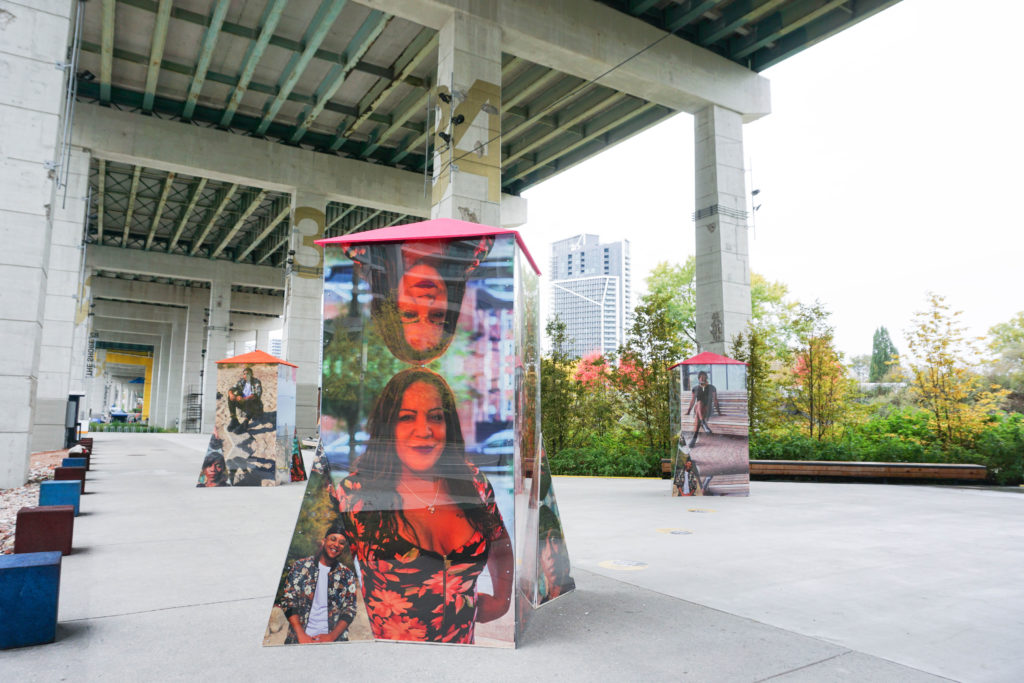 Syrus Marcus Ware, Radical Love, 2020. Installation view at the Bentway.
Syrus Marcus Ware, Radical Love, 2020. Installation view at the Bentway.
There is a vulnerability to visibility, and these structures stood in sturdy contrast to that vulnerability of trans people in public space, which is often transphobic space. Radical Love stood as a vital reminder and “proof” that Black and Afro-Indigenous trans people exist. In the face of heightened street harassment, police violence and abduction, this concept of proof is especially relevant. Proof that we were and are here. Proof that, as trans activist Miss Major says, “I’m still fucking here.” And we aren’t going anywhere.
Radical Love called us to continue to reflect on the immediate need to keep trans people safe in all spaces, public space included. As a city, we regularly experience trans peoples’ contributions, but trans people are so rarely welcomed, let alone celebrated. This piece interrupted that erasure and declared Black and Afro-Indigenous trans people as should be expected in public space. It placed trans people in their rightful, exalted place.
Ware highlighted that many trans people express feeling safer at night, when fewer people are around to heckle, threaten, leer or behave violently. The fact that the installation transformed under darkness was particularly beautiful. I imagined the invisibility cloak of night wrapped around my trans family, and the pillars serving as luminous beacons in late and early hours while trans people headed home from essential work.
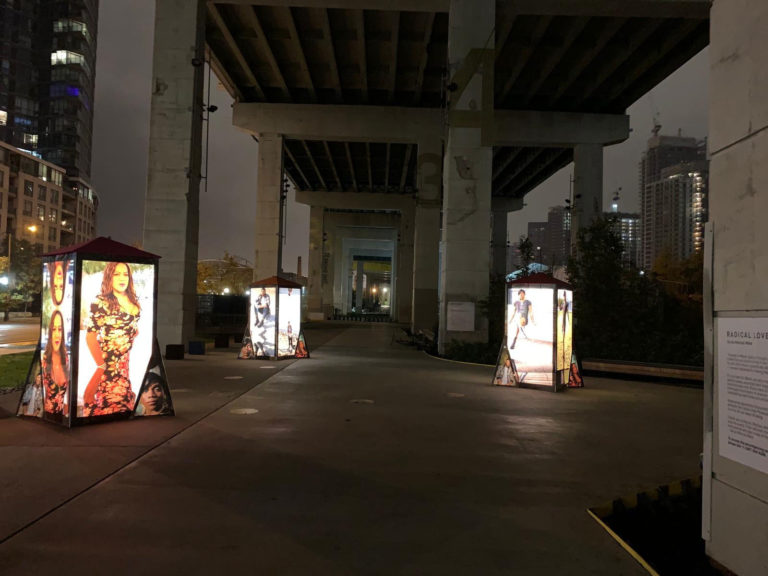 Syrus Marcus Ware, Radical Love, 2020. Installation view at the Bentway.
Syrus Marcus Ware, Radical Love, 2020. Installation view at the Bentway.
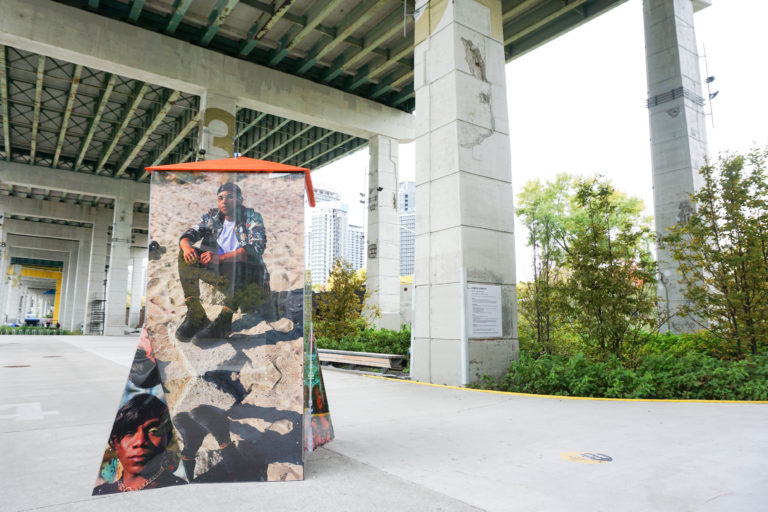 Syrus Marcus Ware, Radical Love, 2020. Installation view at the Bentway.
Syrus Marcus Ware, Radical Love, 2020. Installation view at the Bentway.
While hypervisibility can often elicit necessary fear of violence and annihilation, it is this same visibility that we cannot live without. “We fear the visibility without which we cannot truly live,” Audre Lorde once wrote. “And that visibility which makes us most vulnerable is that which also is the source of our greatest strength.”
The radiance that is Black and Afro-Indigenous trans people unapologetically oozes from their essence and makes them who they are. Thank you to Syrus Marcus Ware, to the participants in this project and to all Black and Afro-Indigenous trans people for your strength and invaluable contributions to this city and our lives. May we create a world where Black and Afro-Indigenous trans people are safe, loved, valued and protected—in all spaces.
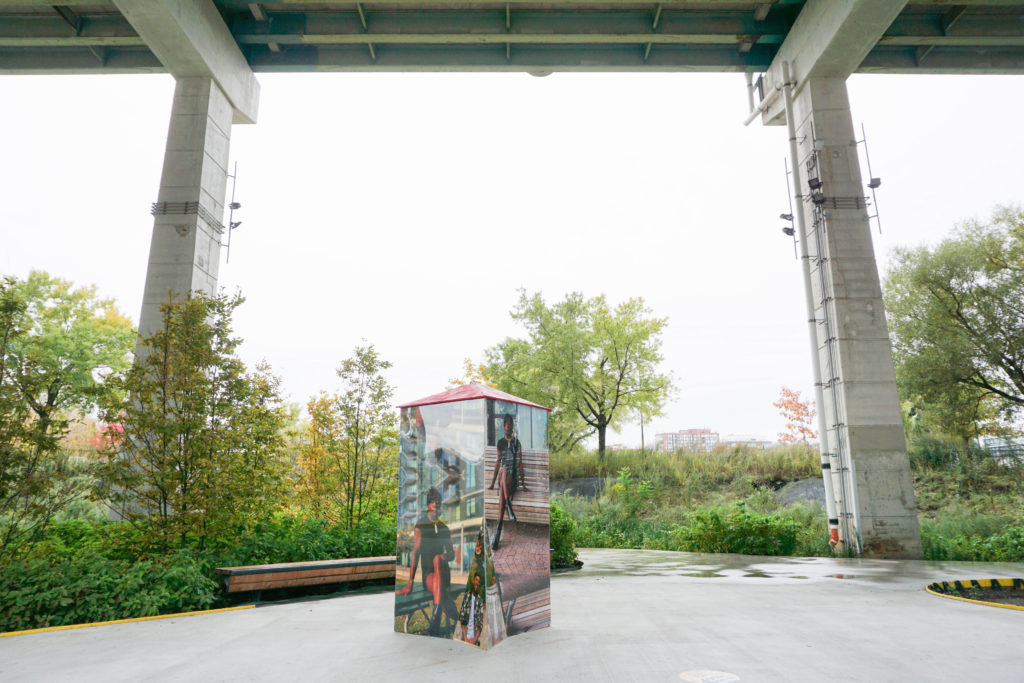 Syrus Marcus Ware, Radical Love, 2020. Installation view at the Bentway.
Syrus Marcus Ware, Radical Love, 2020. Installation view at the Bentway.

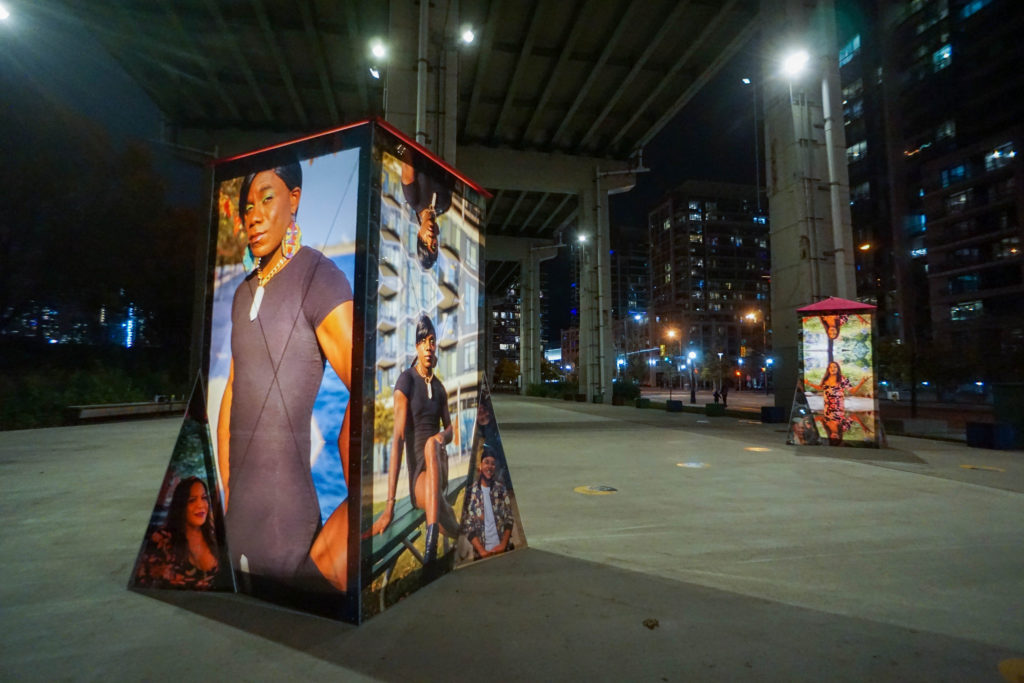 Syrus Marcus Ware, Radical Love, 2020. Installation view at the Bentway.
Syrus Marcus Ware, Radical Love, 2020. Installation view at the Bentway.
